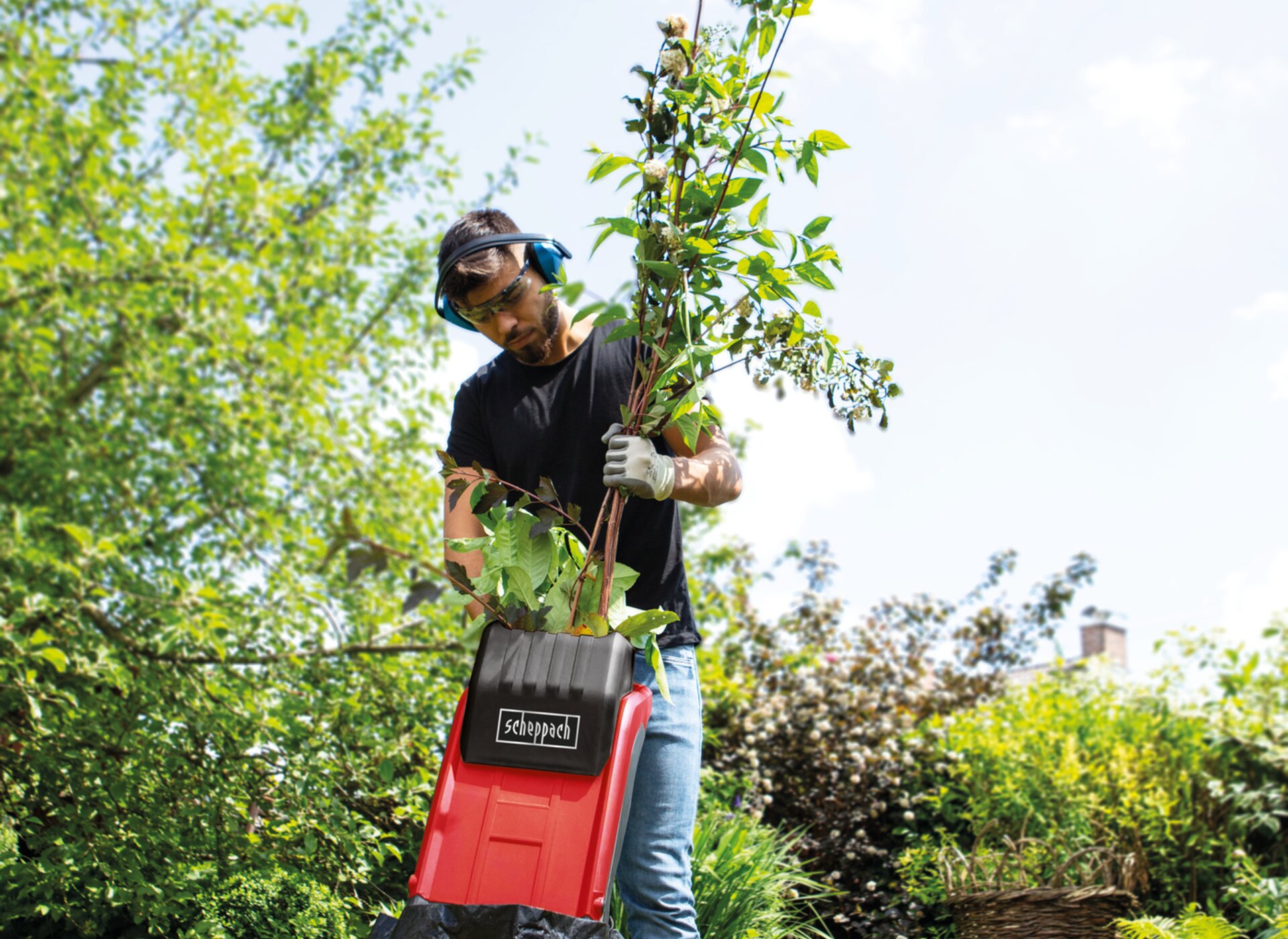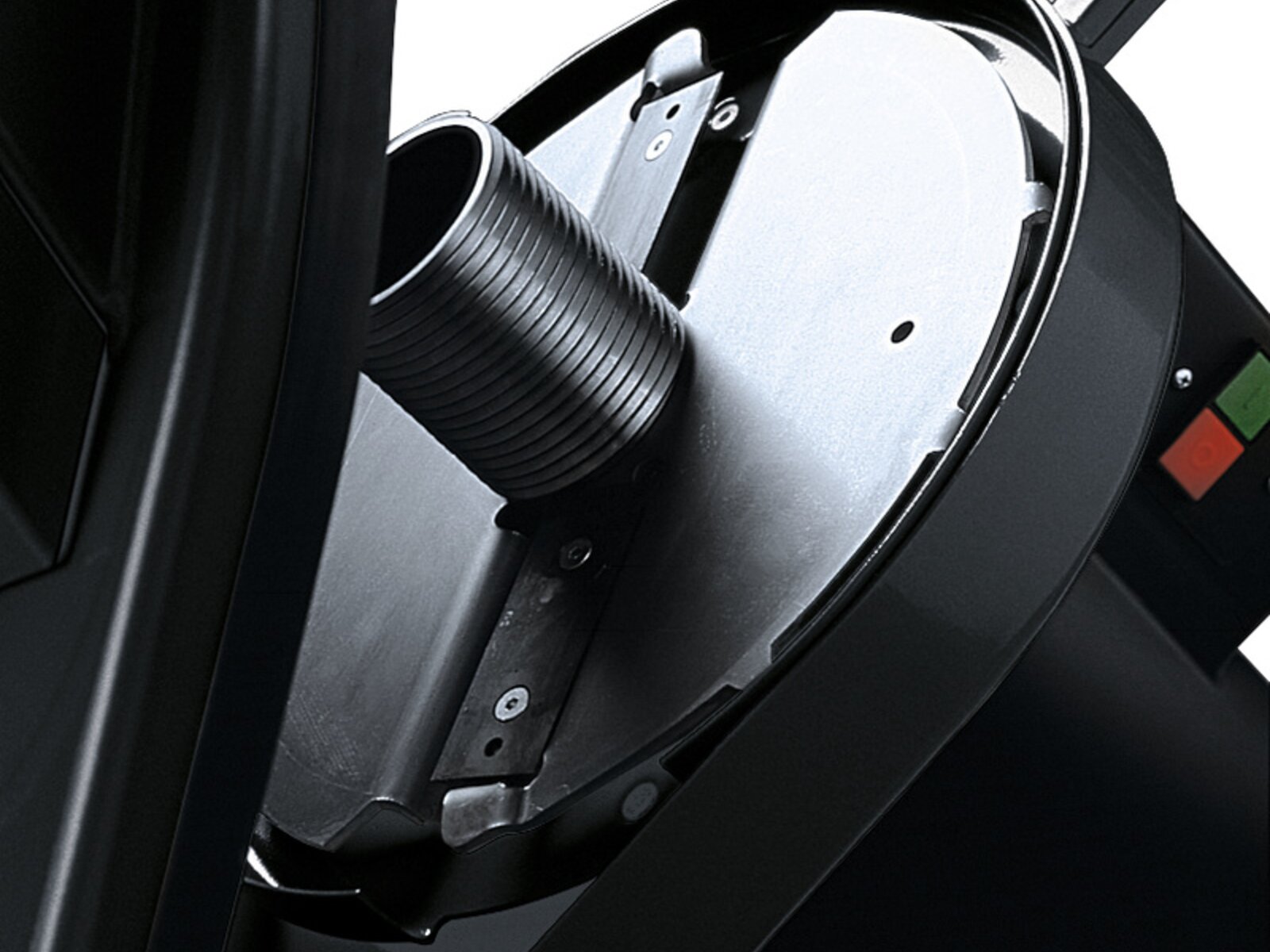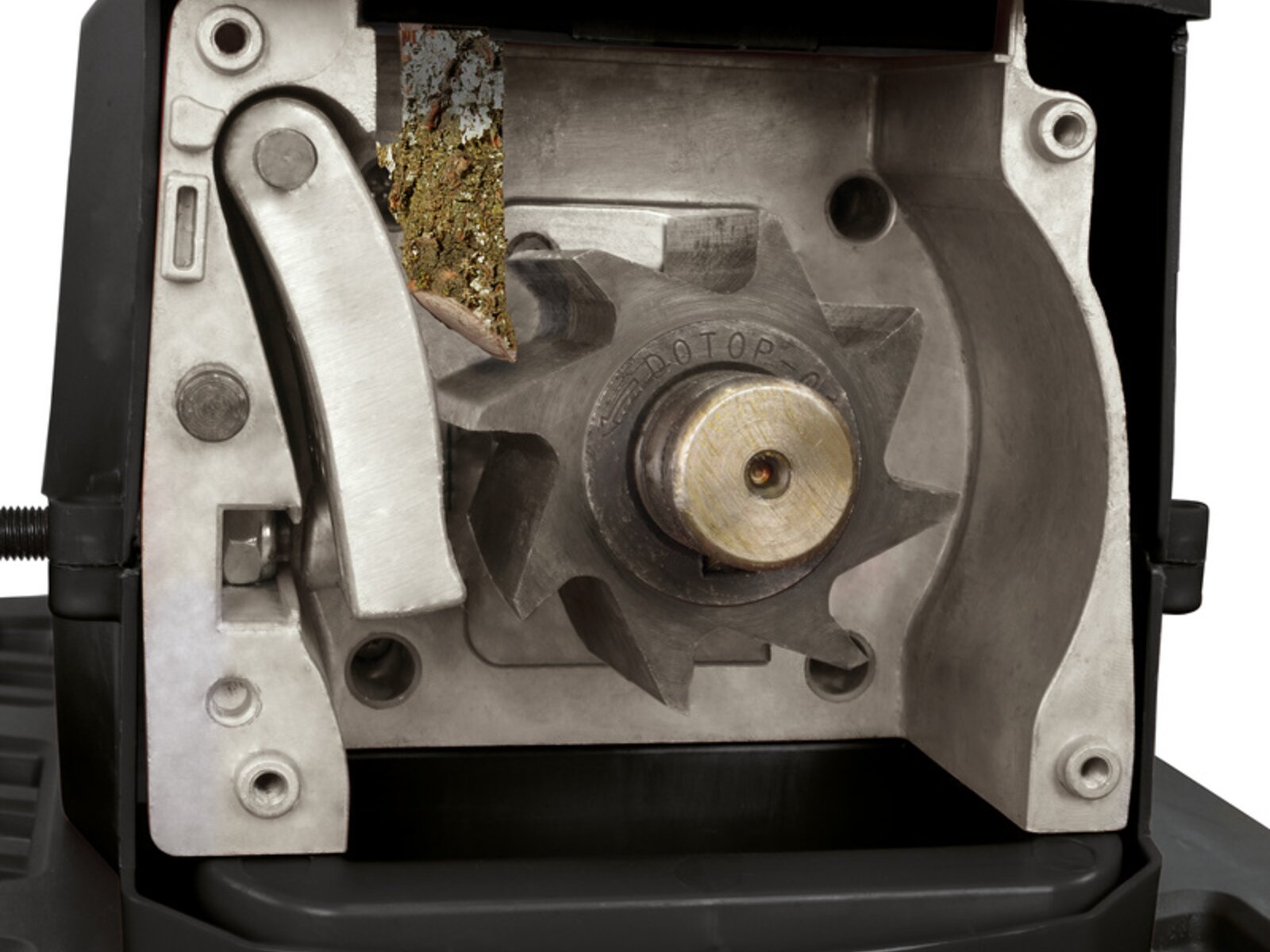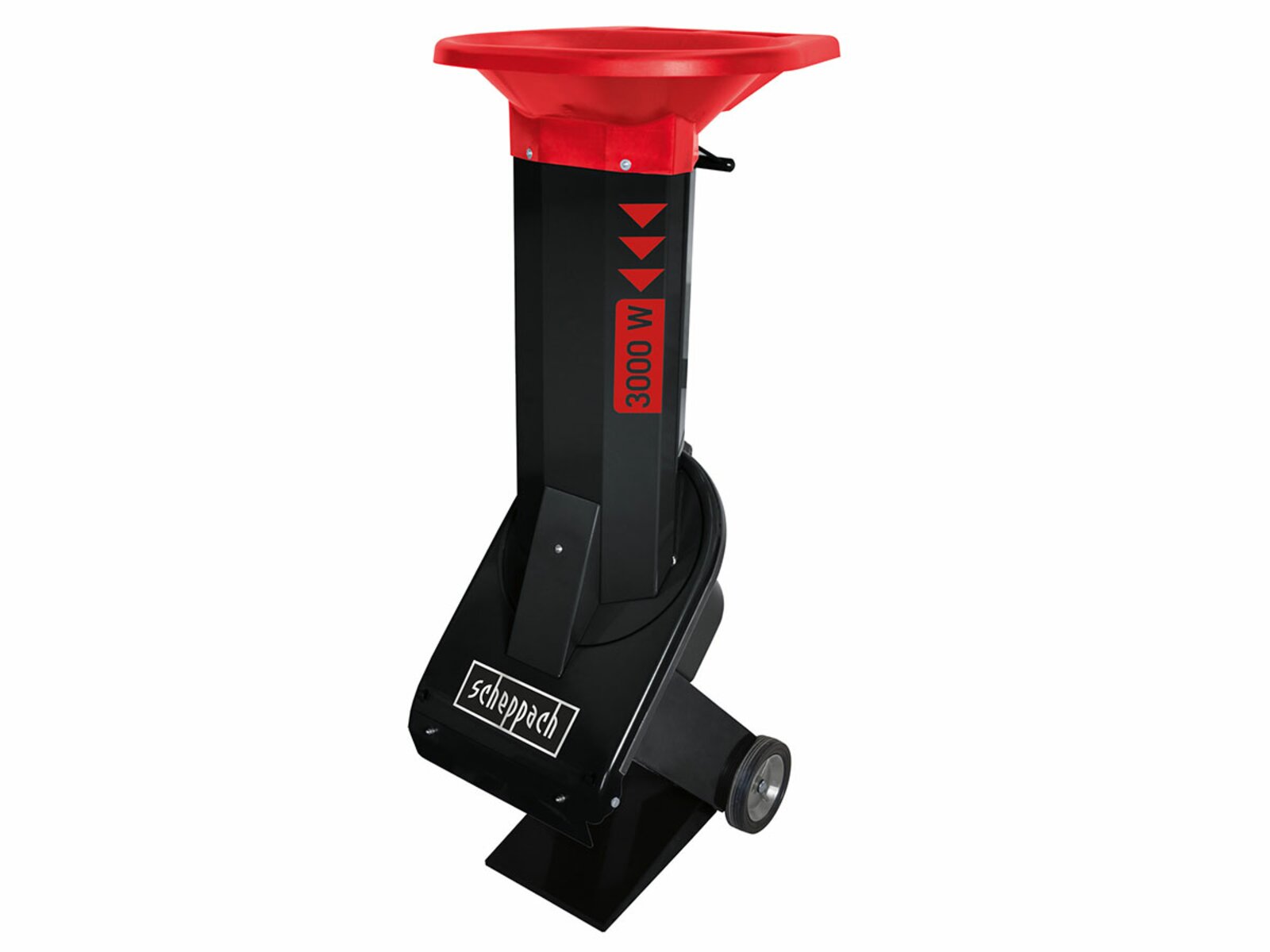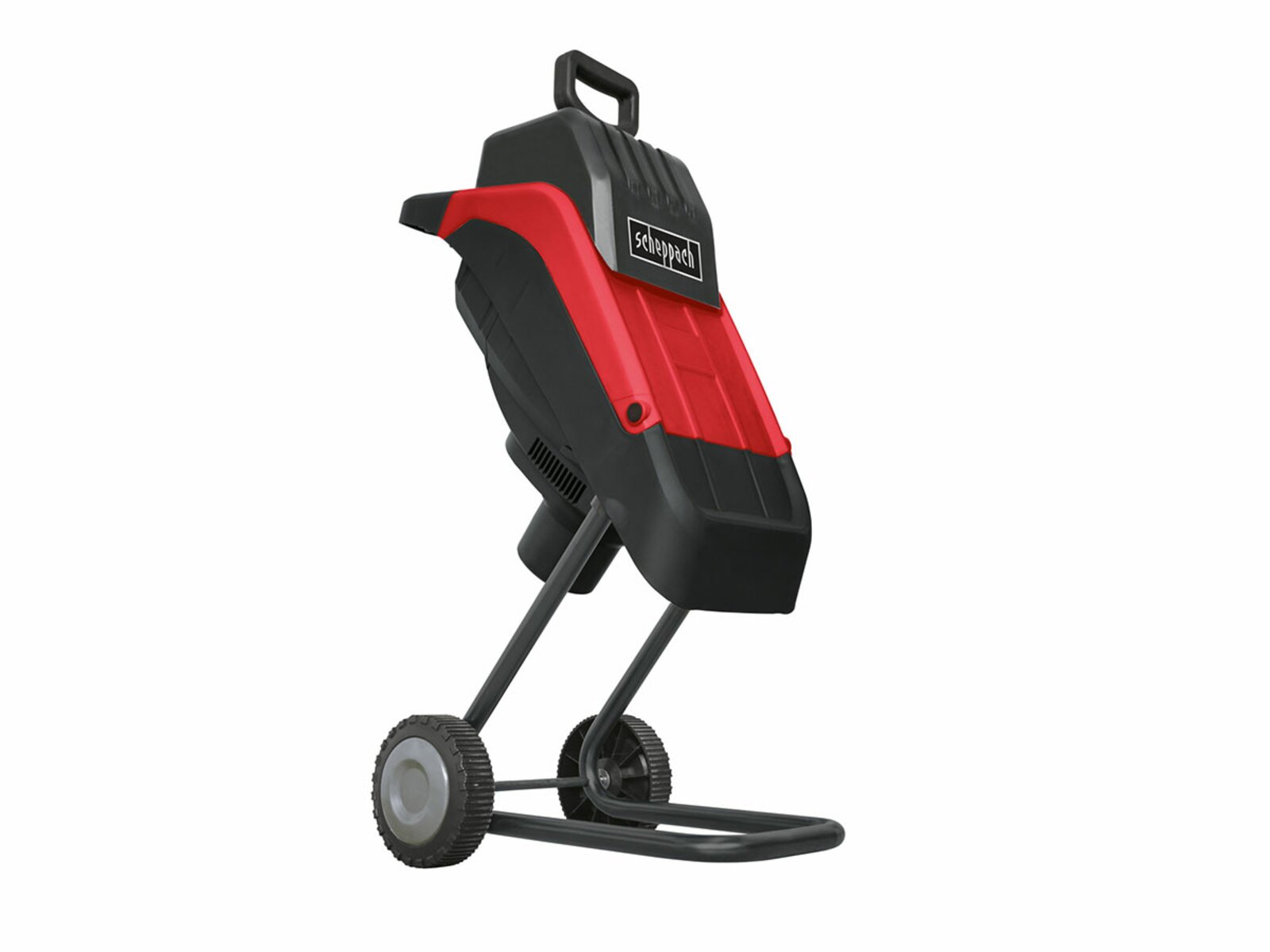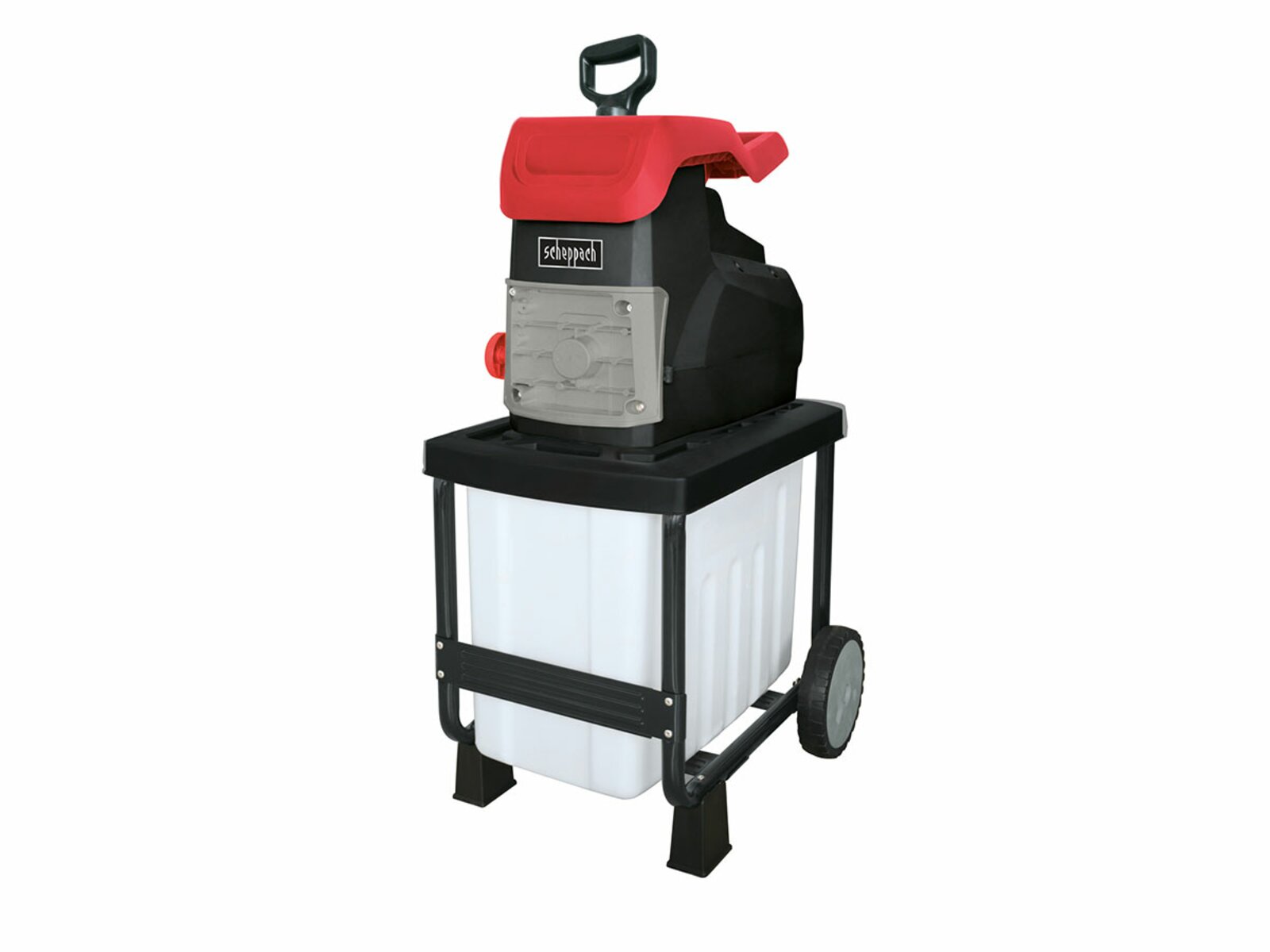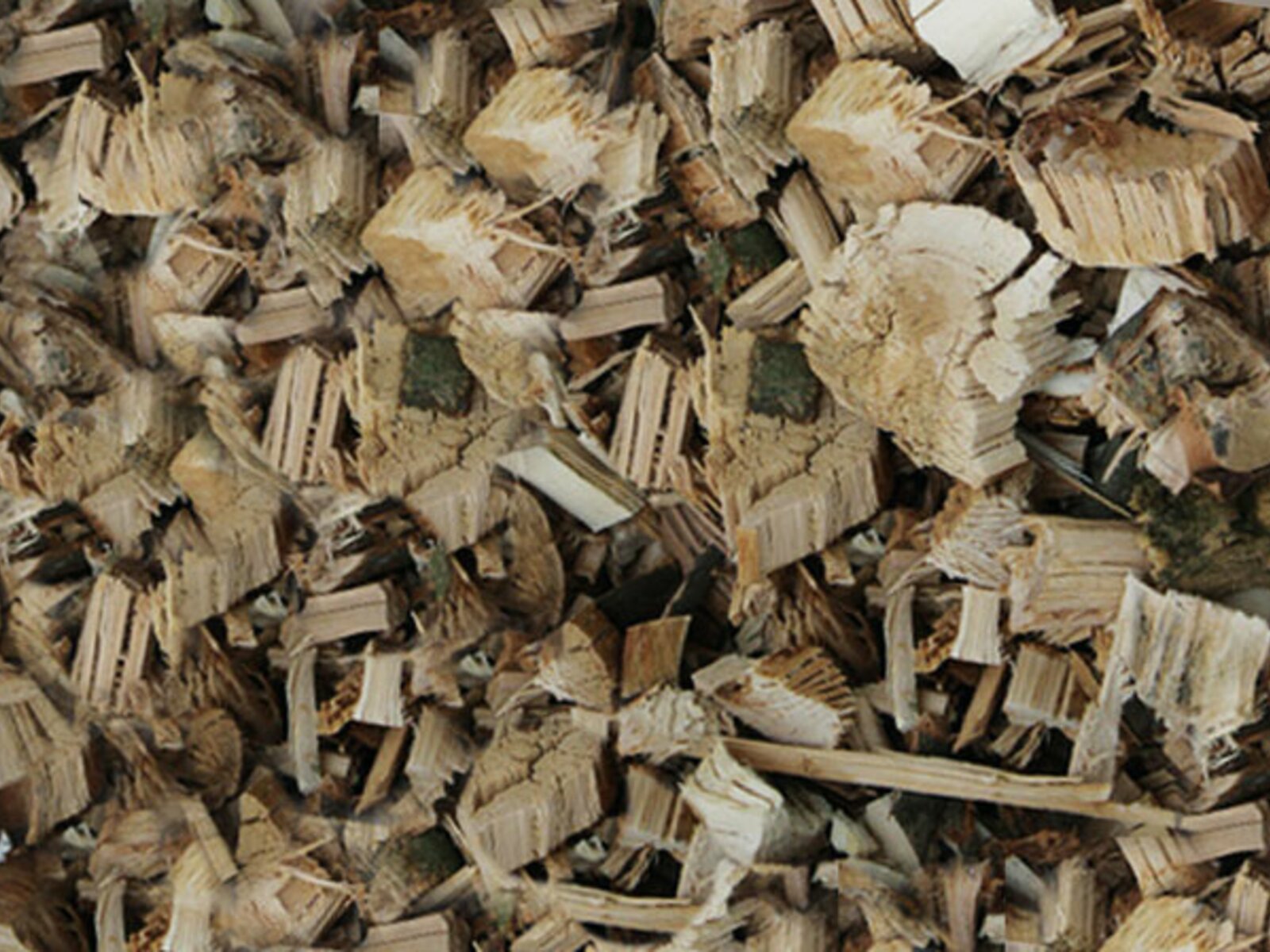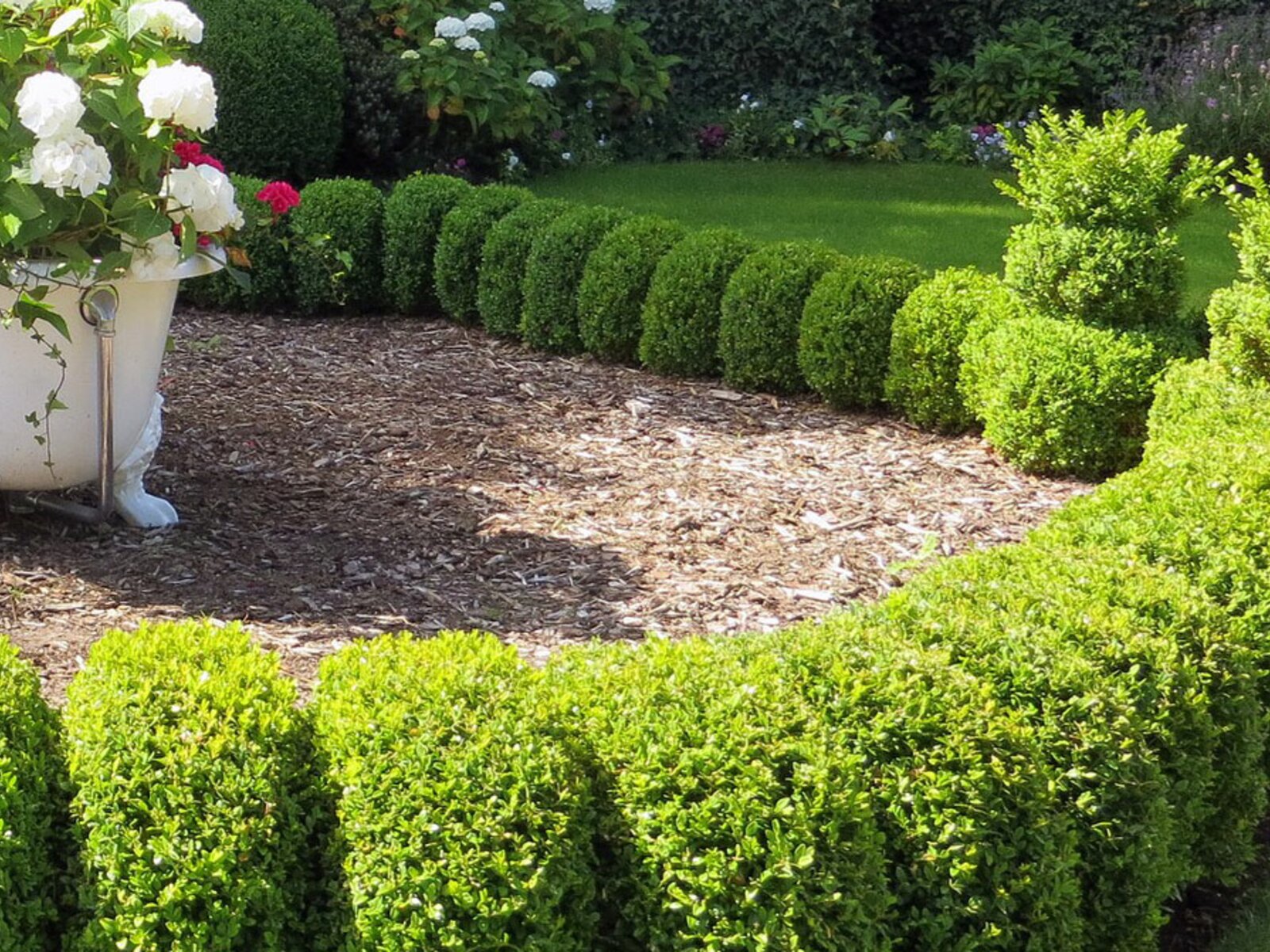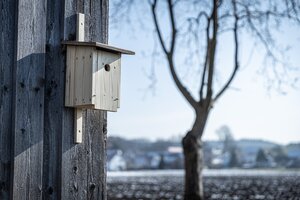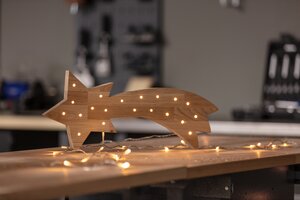Apart from the size and capacity, the main difference between the garden shredders is their cutting system. There are two basic types of garden shredder: the blade shredder and the roller shredder. The latter is also known as the quiet shredder.
As the name suggests, the blade shredder works with rotating blades that cut the plant material. A blade shredder such as the scheppach GS45 is particularly suited to soft plant material. It can shred bushy greenery with ramified branches and large quantities of leaves with ease.
In contrast to this, the roller shredder with a slowly rotating roller cutting unit ensures that the material to be cut is crushed and the wood fibres are broken up. Therefore, a roller shredder such as the scheppach GS50 has a low noise level and is also known as a quiet shredder. It is particularly suited to hard, woody material such as branches, tree off-cuts and woody shrub off-cuts with a maximum branch thickness of 45 mm. If it gets blocked, the roller’s direction of rotation can simply be reversed.
When choosing a garden shredder, the amateur gardener normally goes for an electrical device. Why? That’s because electrical motors are quieter than petrol engines and you do not have to inhale exhaust gases while working. As a shredder is normally used statically in one location in the garden, the power connection is less important. Just connect an extension lead and off you go.
Choosing the right cutting system mainly depends on the material to be cut. If many hedges and shrubs on which there is some greenery from leaves have to be cut, a blade shredder is suitable. In contrast, if a great deal of tree off-cuts is produced, a roller shredder is the better choice. A collection container makes working easier unless there is a fixed area for shredding.
The scheppach range has a number of shredders available for the well-equipped amateur gardener.
A compact garden shredder is a very sensible purchase if you want to reuse greenery in your own garden. However, such a device poses a certain degree of risk if it is not handled properly. The following points must always be observed:
- Secure footing on a level surface is the basis for risk-free work with the garden shredder.
- Never reach into one of the shredder's openings, neither into the intake nor the discharge shaft while the device is connected to the power. Use the plug provided if necessary. With regard to safety, the BIOSTAR 3000 is a prime example, as it has self-closing reach-in protection.
- Gloves and safety goggles are obligatory for your own safety. Particularly on blade shredders where the branches are pulled in much quicker, lashing branches can cause injuries.
- The material to be shredded must never exceed the maximum permissible diameter. This also applies if several branches are pushed into the shaft at the same time. The blades can wedge and become blunt prematurely, the mechanical parts may become blocked and the device may get damaged unnecessarily.
- The outlet chute must always remain clear. Remove chopped material that has accumulated from the discharge on a regular basis so that no back-ups occur.
The main reason for purchasing a garden shredder is the desire to keep valuable raw materials in your own garden. For example, as a green mulch layer in ornamental or fruit and vegetable beds, as a path covering or to mulch hedges. If the chopped material cannot be used immediately, it can also be added to the compost. Here, it provides the structure required to aerate the compost well, decays and can then be used in many locations in the garden in order to support the garden’s ecosystem for a long time.
Depending on the reuse you are looking for, you should already consider what you are putting through the shredder at the same time when you begin shredding. If you want to put out a path covering or provide the hedge along the fence with a covering layer made of wood chips so that no weeds grow along the fence, you should only shred thicker branches with no leaves. Of course, the shredder's maximum diameter must not be exceeded. If required, use the pruning shears to remove green branches prior to shredding. Wood chips ensure that paths can be stepped on safely even when it is raining. Hedges that have been mulched with wood chips withstand dryness better, as the ground is protected from the sun and water does not evaporate.
In contrast, wood chips are not suitable as a mulch layer for beds, as they require nitrogen to rot, which would be pulled from the ground and be taken from the usable and ornamental plants. Shredded branches with leaves are suitable for mulching beds. The chopped material obtained from this is much finer and gives nitrogen off into the ground when decaying, which in turn is good for the plants. At the same time, a green mulch layer also protects the ground from evaporation by the sun which means that watering is not required as frequently.
If the chopped material is to be added to the compost, pre-sorting is of course not required.


